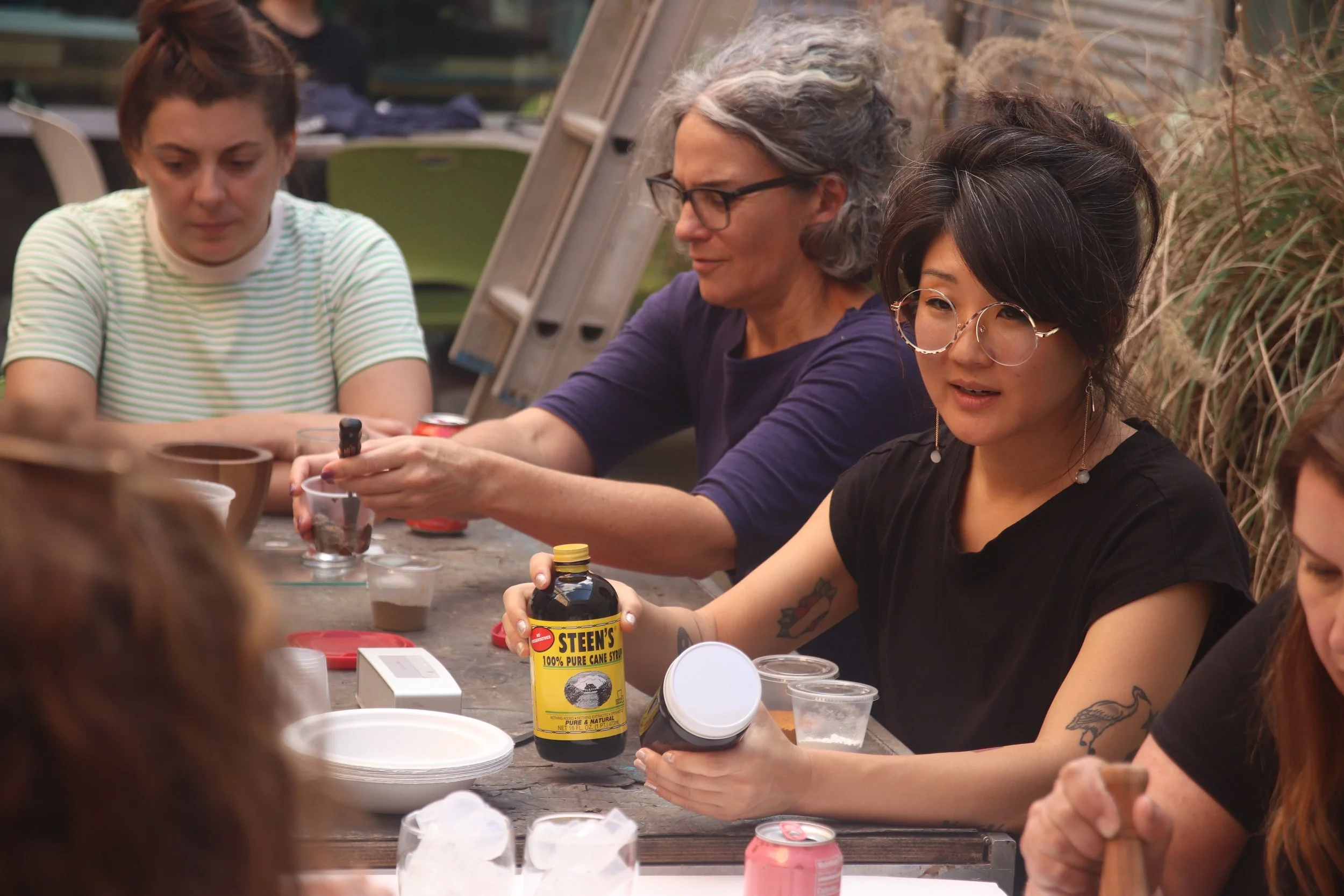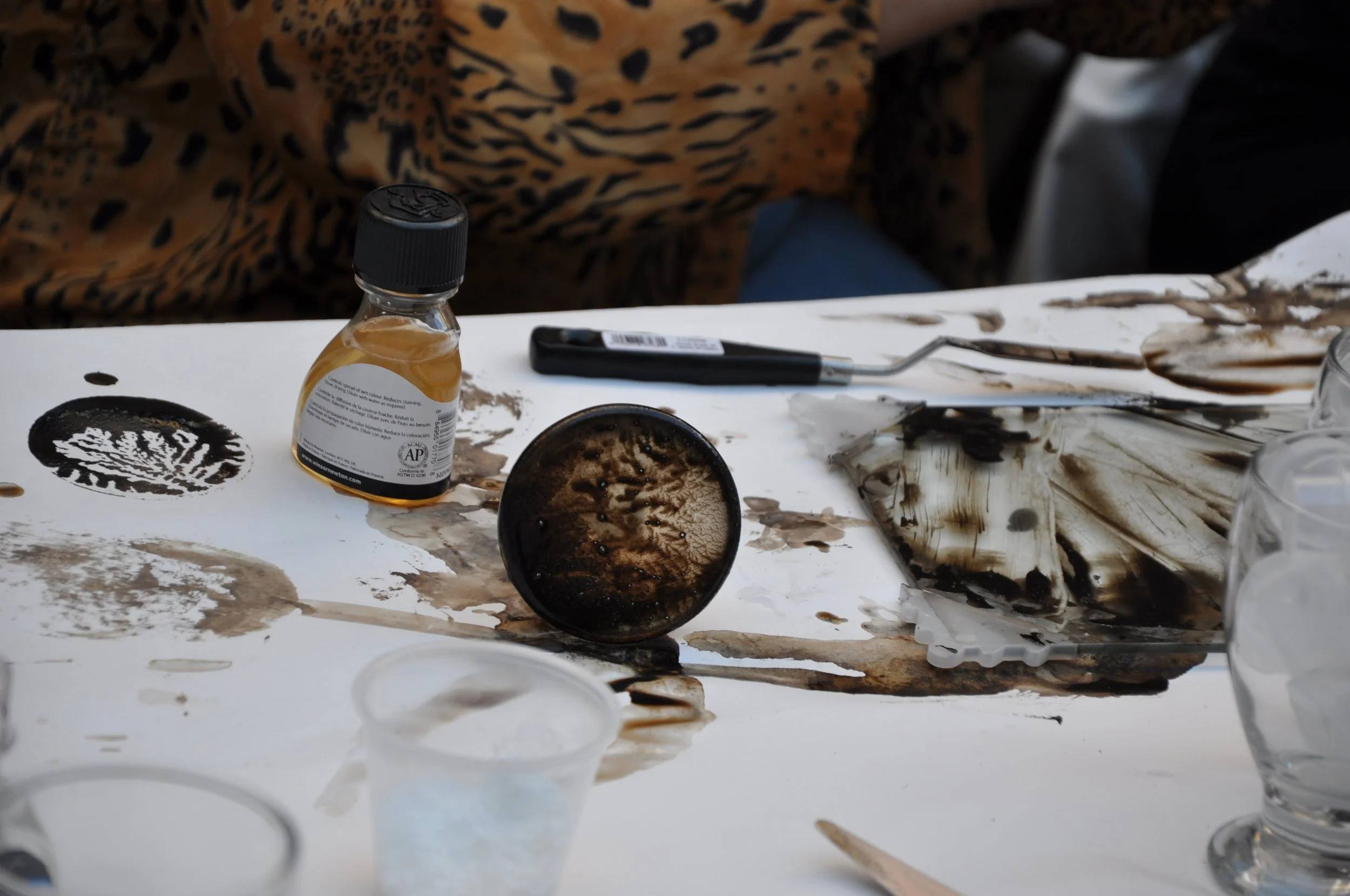INHABITATION at The Small Center at Tulane University
Throughout an eight-week residency at The Small Center with collaborator Dr. Robin McDowell, the exhibit INHABITATION shifts as pieces are worked on, additional artists contribute, and pigment-making workshops are held. Participants of this exhibit are encouraged to move away from colonial inhabitation wherein land and people are seen as disposable resources and to re-imagine their relationship to the environment, and in turn, to one another. Selected works appear below.
The River by Kira Akerman
Plantation Imagination by Dr. Robin McDowell
PIGMENT-MAKING WORKSHOPS
The workshop begins with a short informational talk and demonstration of methods for incorporating archives and ethnography in environmental art-making.
Dr. Robin McDowell explains how she has followed the intertwined histories of oil, salt, and sugar in Louisiana’s sinking wetlands, and came to realize the perverse metabolism of natural resource extraction at the expense of Black lives and labor. Dr. McDowell’s creative work offers a provocation: The molecular structures of soil and water collected from former plantation sites are evolving and restructuring themselves due to ecological, economic, racial, and psychological violence and theft enacted upon the environment by European settlers, plantation owners, and corporations. These practices range from soil exhaustion by mono-cropping, erosion from deforestation and engineering projects, and microbiological reconfiguration from the psychic energies of terror, pain, hope, and pleasure. As the pigments crystallize, oxidize, melt, dissipate, and congeal over time, visual and tactile stories emerge through the rendering of new creative and interpretive possibilities from materials themselves.
Participants work together to create watercolor pigments from ethically foraged organic materials including soil, clay, silt, rock salt, and carbon byproducts from research sites in south Louisiana.
Participants then learn hands-on techniques for creating paints with soil and other organic matter and take home a small pigment pot created during the workshop.
As participants examine and work with the materials, they engage in discussion about the materials themselves, as well as the histories of the peoples, lands, and bodies of water where the materials were first encountered.




